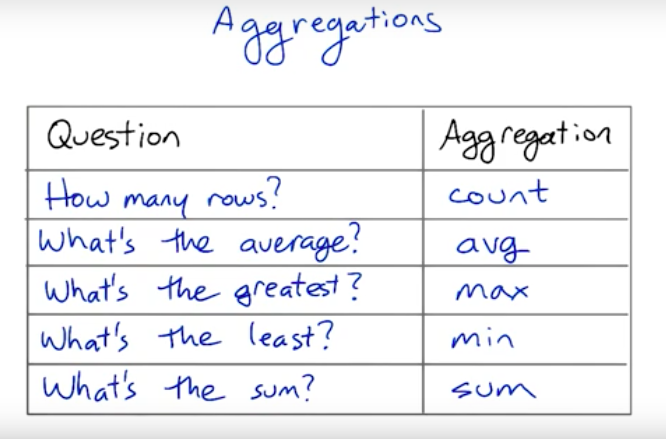Aggregations
So in the last quiz, we saw one example of an aggregation, a database's operation of summarize multiple rows into a single row. Counting up the number of gorillas in the animals table was a count aggregation. It takes a several rows, each represents one gorilla and representing the count.This picture shows the results of a count aggregation on the animals table. It's a count aggregation, grouping the values in the table using the species column. In other words, it's counting the number of rows that have the same value in that column.
上一個測驗中我們看到 aggregation 的一個例子,把很多行列的資訊彙整成單獨一列。數有幾隻大猩猩這種方式叫做 count aggregation,有幾行就代表有幾隻大猩猩。下面這張圖就把每一種物種有幾隻算了出來。
 Any time we want to compute a single result from a set of values, that's an aggregation.
Any time we want to compute a single result from a set of values, that's an aggregation.
每次我們想從一堆數據裡計算出單一個結果就叫做 aggregation。
Here are some of the most common aggregation functions in SQL. Count is different from the other ones, in that it takes value of any type, and returns a number. Most of the other aggregations only work on numbers. For instance, you can't average a column of string values because only numbers have an average.
這張表是一些常用的 aggregation,count 跟其他 aggregation 不太一樣,他可以對任何資料類型的值做執行,算出一個數字,其他 aggregation 都只對數字做計算,就像你不能算出一堆字串的平均數。
